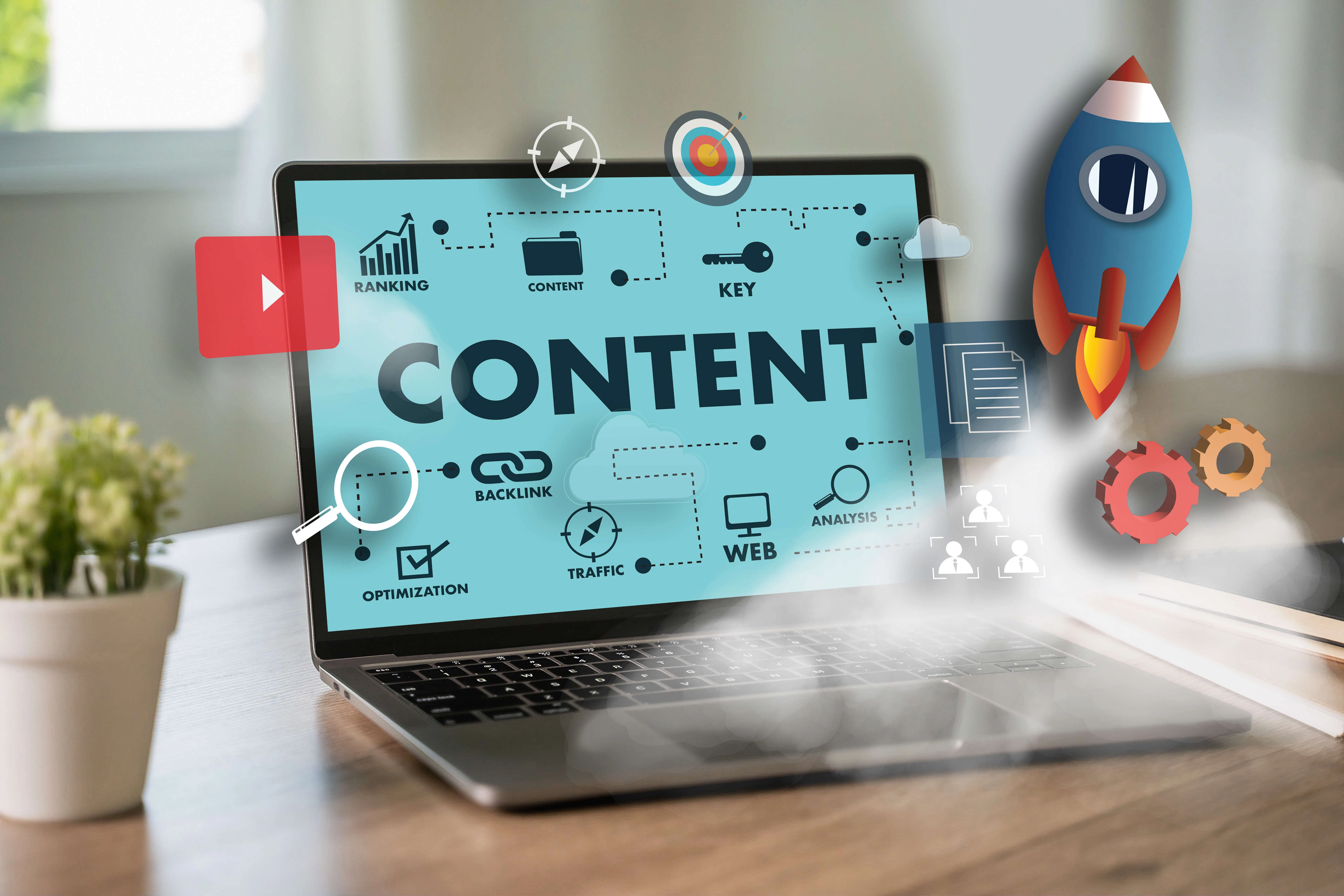Inspiring Content Marketing Examples to Elevate Your Strategy
6 mins | Dec 25, 2023

Table Of Contents
2. What is the Importance of staying updated with trends?
3. What is the near future of content marketing?
4. Best Content Marketing Examples of 2024
Introduction
Content marketing is a strategic marketing approach that involves creating and distributing valuable, relevant, and consistent content to attract and engage a target audience. The primary goal is to build brand awareness, establish trust, and ultimately drive profitable customer action. Let's have a look at all the content marketing trends we saw in 2023 and also learn “How to create a successful marketing plan?”
What is the Importance of staying updated with trends?
Today, where consumer behavior and technology are constantly in flux, staying updated with content marketing trends is not just beneficial but imperative. Trends serve as valuable indicators of the everchanging preferences of the target audience, allowing businesses to tailor their content strategies to remain relevant and resonant. By incorporating the latest trends, brands can not only capture attention but also outpace competitors and solidify their position as industry leaders.
What is the near future of content marketing?
As we navigate through 2023, the content marketing landscape is experiencing a transformative evolution. From the rise of interactive and immersive content formats to the growing influence of artificial intelligence in content creation and distribution, businesses are presented with unprecedented opportunities to connect with their audience in meaningful ways. The integration of augmented reality (AR) and virtual reality (VR) into content strategies, the emphasis on sustainability and social responsibility, and the advent of voice search optimization are just a few examples of the exciting trends shaping the content marketing landscape in the current year.
1. Interactive Content:
Interactive content goes beyond static information. It actively involves the audience, making them participants rather than just passive consumers. Examples include interactive infographics where users can click on different elements for more information, quizzes that provide personalized results, and polls that allow users to express their opinions.
Benefits: Higher engagement levels, increased time spent on your site, and valuable data collection on user preferences.
2. User-Generated Content (UGC):
UGC involves your audience in the content creation process. It can be in the form of reviews, testimonials, photos, videos, or any content created by your users. Brands often create campaigns or hashtags to encourage users to share their experiences, which not only provides authentic content but also strengthens the sense of community.
Benefits: Builds trust and credibility, provides social proof, and taps into the power of word-of-mouth marketing.
3. Video Marketing:
Video marketing has become increasingly popular due to the rise of platforms like YouTube, TikTok, and Instagram Reels. Brands use videos for various purposes, such as product demonstrations, storytelling, behind-the-scenes looks, and interviews with key personalities.
Benefits: Captures attention effectively, allows for creative storytelling, and often has a higher shareability factor on social media.
4. Email Marketing Campaigns:
E-mail marketing remains a powerful tool for nurturing relationships with your audience. Personalized and targeted email campaigns can include newsletters, exclusive offers, product updates, and educational content tailored to the recipient's interests.
Benefits: Direct communication with the audience, potential for high customization, and the ability to drive specific actions such as website visits or purchases.
5. SEO-Optimized Content:
Creating content that is valuable to your audience and optimized for search engines is crucial for organic traffic. This involves keyword research, creating high-quality and relevant content, and optimizing on-page elements.
Benefits: Improves visibility in search engine results, attracts organic traffic, and establishes your brand as an authority in your industry.
6. Podcasting:
Podcasting has emerged as a powerful medium for content marketers to connect with their audience intimately. Brands can host podcasts to discuss industry trends, interview thought leaders, and provide valuable insights, offering a convenient and portable form of content.
Benefits: Builds a loyal audience, establishes thought leadership, and offers a convenient way for users to consume content during various activities.
You can check out this amazing podcast by Nikhil Kamath. The co-founder of Zerodha talked with the pioneering Youtubers about how Content Marketing evolved and has changed the perception of YouTube altogether.
7. Influencer Marketing:
Influencer marketing involves collaborating with individuals who have a significant following and influence within your target audience. Brands can partner with influencers to authentically promote products or services, leveraging the trust that influencers have built with their followers.
Benefits: Expands reach, builds credibility through association, and can create a more relatable brand image.
8. Social Media Campaigns:
Social media platforms are dynamic spaces where brands can engage with their audience through various content formats like images, videos, and stories. Creative campaigns, challenges, and interactive content on platforms like Instagram, Twitter, and LinkedIn can foster community engagement and brand awareness.
Benefits: Enhances brand visibility, encourages user participation, and allows for real-time interactions with the audience.
9. Content Hubs:
A content hub is a centralized online resource that serves as a one-stop destination for all relevant content in a particular niche or industry. It provides a seamless and organized user experience, allowing visitors to explore a variety of content types, including articles, videos, and infographics.
Benefits: Positions the brand as an authority, improves user experience, and encourages repeat visits.
10. Storytelling Campaigns:
Storytelling is a powerful way to connect with your audience emotionally and create a memorable brand narrative. Brands can use various mediums, including blog posts, social media, and videos, to share authentic stories about their origin, values, and the people behind the brand.
Benefits: Establishes an emotional connection, humanizes the brand, and makes the content more relatable and memorable.
Regularly analyze performance metrics and adapt your approach based on your target audience's evolving preferences and behaviors to ensure sustained success.
Best Content Marketing Examples of 2023
1. Amul: This iconic dairy brand has mastered the art of topical marketing, creating witty and relatable content based on current events and pop culture. Their illustrations and social media posts are a constant source of amusement and engagement, keeping the brand relevant and top-of-mind.
2. Flipkart: Flipkart's content marketing strategy revolves around storytelling and user-generated content. Their campaigns often feature real customer stories and celebrate the emotional impact of their products. This has helped them build a strong connection with their audience and foster brand loyalty.
3. Myntra: Myntra has successfully used influencer marketing and social media to connect with fashion-conscious consumers. Their collaborations with celebrities, fashion bloggers, and engaging social media content have helped them establish themselves as a leading fashion brand in India.
4. Zomato: Similar to Flipkart, Zomato leverages humor and relatable content to engage with its audience. Their witty social media posts, creative campaigns, and interactive features like "Zomato Order Songs" have created a strong brand identity and loyal customer base.
5. Dunzo: This hyperlocal delivery service has created a unique content marketing strategy focusing on the convenience and efficiency of its service. Their "Dunzo Delivered" series showcases the diverse range of deliveries Dunzo handles, highlighting their impact on everyday life.
6. Swiggy: Swiggy's content marketing strategy focuses on creating a sense of community and celebrating food culture. Their "Foodie Diaries" series and partnerships with local chefs help them connect with food enthusiasts and promote the joy of eating.
7. CRED: This credit card payment platform has gained popularity through its quirky and humorous social media content. Their witty ads and celebrity collaborations have become viral sensations, creating a strong brand image and attracting new users. CRED's content marketing strategy focuses on building brand awareness through humor and entertainment, making it a unique example in the financial services sector.
8. Oreo India: Oreo India has mastered the art of creating playful and engaging content around their iconic cookie. Their social media campaigns often involve interactive challenges and user-generated content, keeping the brand fun and relevant for young audiences.
9. Netflix India: Netflix India has been successful in creating a buzz around their regional content through engaging social media campaigns and partnerships with local influencers. Their "The Lineup" and "Netflix India Originals" campaigns have helped them connect with Indian audiences and promote their diverse content library.
10. Vicks: Vicks has used emotional storytelling to create impactful content campaigns in India. Their "Touching Lives" series features real stories of people overcoming challenges with the help of Vicks products. This strategy has helped them build brand loyalty and emotional connection with their customers.
Conclusion
The best content marketing examples of 2023 showcase how brands can effectively leverage these trends, emphasizing relatability, storytelling, and community building. Success in this dynamic environment requires continuous analysis of performance metrics and adaptability to evolving audience preferences.
Ultimately, the key takeaway is that content marketing success in 2023 lies in strategically integrating these trends to create authentic, engaging, and memorable experiences. The mantra is to evolve with the trends, connect meaningfully with the audience, and let compelling storytelling drive brand resonance.
Author











